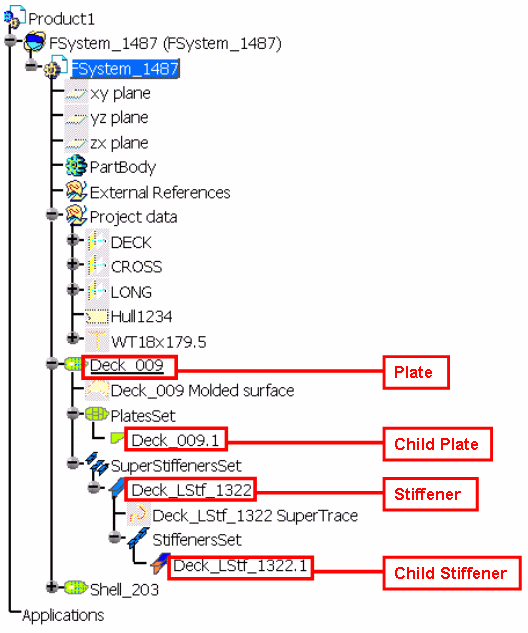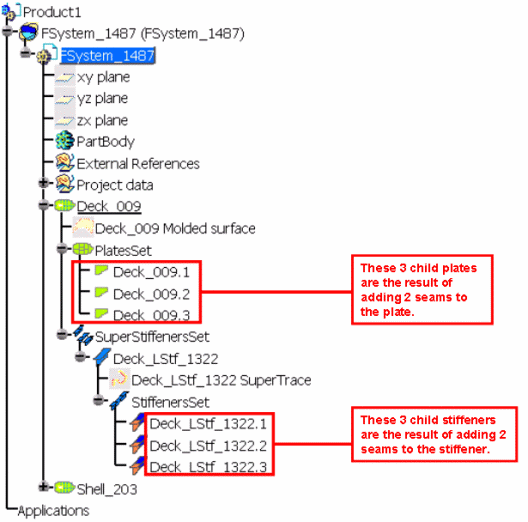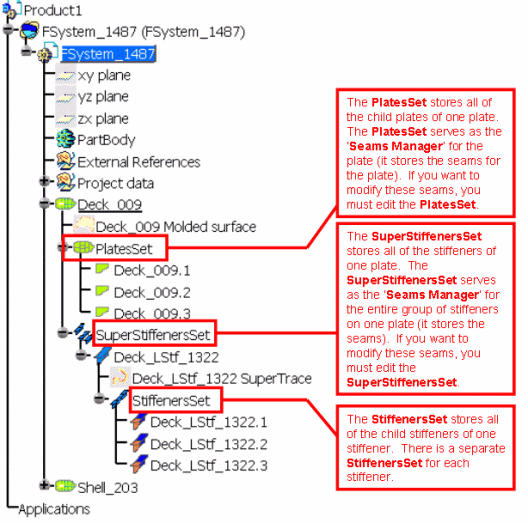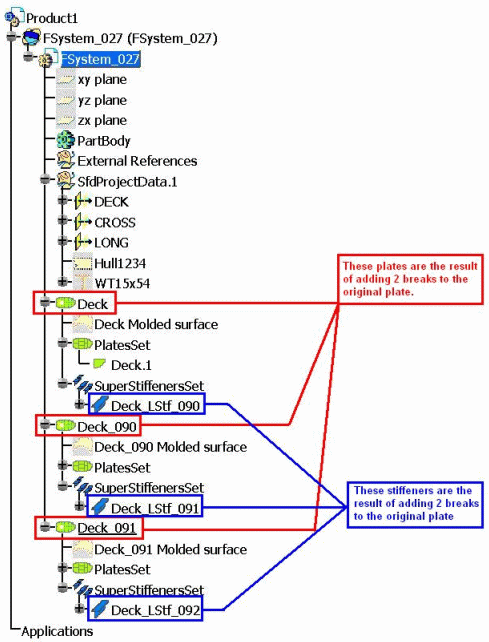
The geometry (support, offset, and limits) is stored in the object. If you want to change the geometry, you must edit the object. The material and orientation attributes (material, grade, thickness (plate), section (stiffener), and orientation) are stored in the object and the child object. If you want to change an attribute for a specific child object, you must edit that child object. If you want to change an attribute for all of the child objects, you must edit the object.


